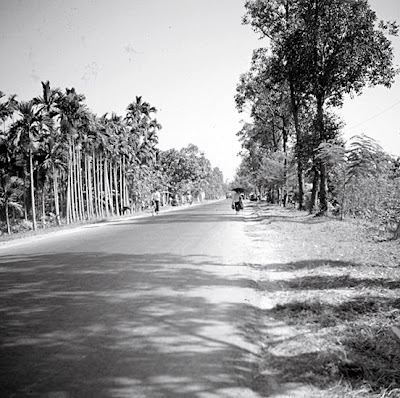I don't normally discuss current issues in Taiwan, except when they're related to the "back in the day" issues covered here. If I want in-depth commentary on such things, I rely on those who are closer to the situation, like Michael Turton, an American educator who lives and works in Taichung. His blog "
The View From Taiwan" is one of my daily reads and has always been one of the links displayed in the column to your right.
However, because of some relatively new events involving the governments of Taiwan, the United States and the People's Republic of China, I hope that you'll forgive me for breaking from the routine for a few moments.

Taiwan has relied on the United States for the bulk of its defense weapons for decades. The People's Republic of China (PROC) is opposed to that, obviously, because it would make it very costly for them to take over a nation that is able to defend itself. American troops were stationed there, as we well know, until 1979 when President James Earl Carter pulled them out. Even after that we continued to sell arms to the Taiwan government as they requested them. Please note that we have never
given them anything in that regard.
In recent years the PROC has referred to Taiwan as a "renegade province," implying that they've always owned it and simply want it back. In truth, Taiwan was never "owned" by mainland China. It appears to me that the United States, Japan and even Holland could
all come much closer to justifying such an outlandish claim. But of course they wouldn't do that because the
future of Taiwan is best left to the good
citizens of Taiwan. That's what democracy is all about.
Which brings me to the issue that prompted this piece: I read an excellent editorial today at
the Cato Institute website, which was reprinted from the July 22nd edition of the Asia Times. It's fairly lengthy, but if you have any interest in the future of Taiwan, I encourage you to read it carefully.
The bottom line is this: The United States appears to have frozen the sale of military arms to Taiwan -- even those already contracted for. Admiral Keating, the Commander of the U.S. Pacific Command (PACOM) said recently that there
is such a freeze. The U.S. State Department, on the other hand, says there is
no freeze. Someone is obviously...uh, mistaken. (How's that for diplomacy?)
All we know for certain is that weapons have not been shipped to Taiwan for quite a long while and no one wants to say why -- or even if -- that's the case. The Cato article offers several interesting possibilities.
If you feel that Taiwan has the right to defend itself against involuntary takeover by the People's Republic, and that we Americans have an obligation to do all that we can to assist them in that effort, then I encourage you to contact your elected representatives and politely ask them to support the free and independent government of The Republic of China (Taiwan). You can do this easily on-line: To contact your Senators,
click here and enter your state. To contact your Representative,
click here and enter your state and ZIP code.
I think that we who were fortunate enough to meet and help defend the people of Taiwan many years ago should do what we can to support them in their continuing struggle, especially in these present circumstances.
I'm hopeful that many others will feel the same.
 Does anyone know if these USTDC lighters were presented by TDC, maybe as a going-away gift, or were they sold in the Navy Exchange or by local merchants?
Does anyone know if these USTDC lighters were presented by TDC, maybe as a going-away gift, or were they sold in the Navy Exchange or by local merchants?
















































